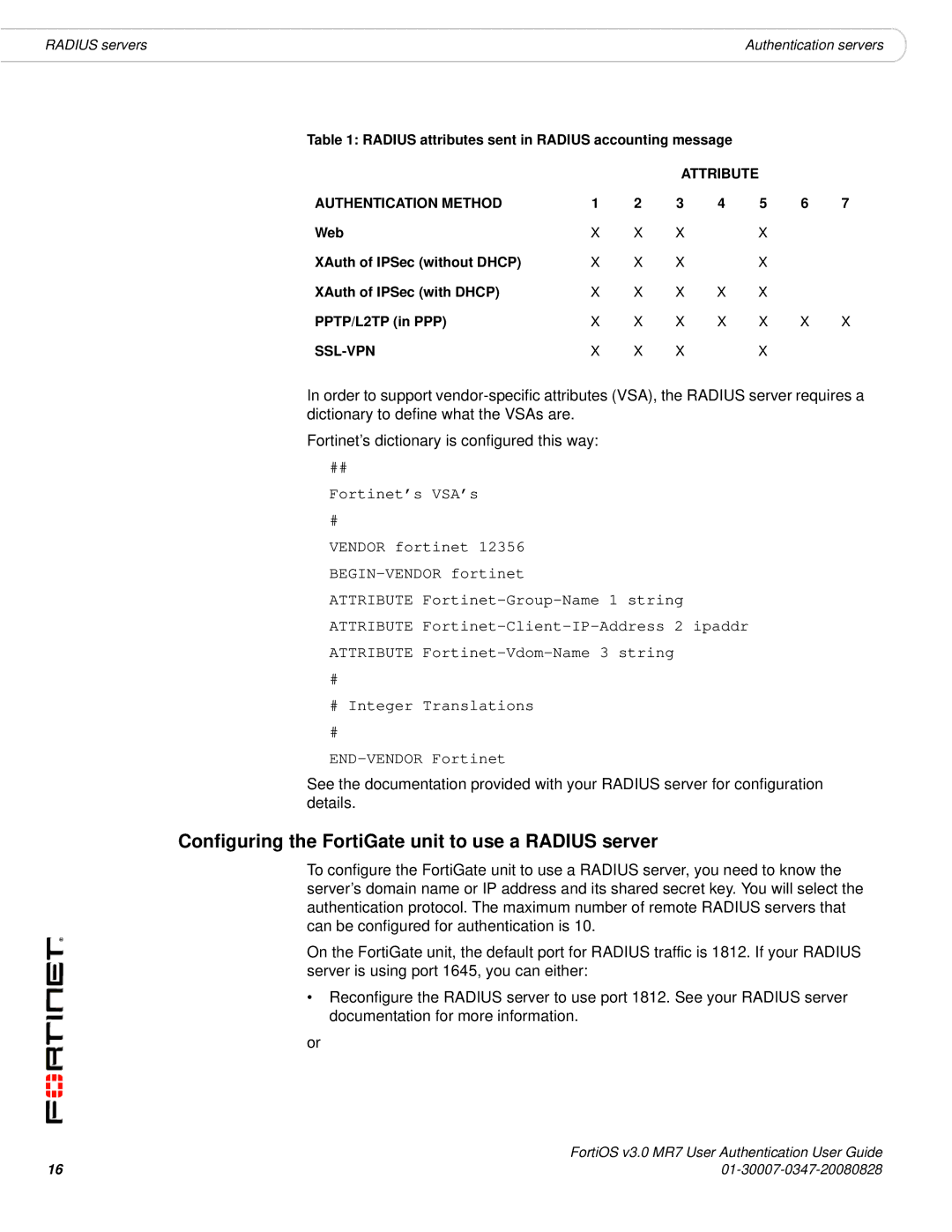
RADIUS servers | Authentication servers |
Table 1: RADIUS attributes sent in RADIUS accounting message
|
|
| ATTRIBUTE |
|
| ||
AUTHENTICATION METHOD | 1 | 2 | 3 | 4 | 5 | 6 | 7 |
Web | X | X | X |
| X |
|
|
XAuth of IPSec (without DHCP) | X | X | X |
| X |
|
|
XAuth of IPSec (with DHCP) | X | X | X | X | X |
|
|
PPTP/L2TP (in PPP) | X | X | X | X | X | X | X |
X | X | X |
| X |
|
| |
In order to support
Fortinet’s dictionary is configured this way:
##
Fortinet’s VSA’s
#
VENDOR fortinet 12356
ATTRIBUTE
ATTRIBUTE
ATTRIBUTE
#
#Integer Translations
See the documentation provided with your RADIUS server for configuration details.
Configuring the FortiGate unit to use a RADIUS server
To configure the FortiGate unit to use a RADIUS server, you need to know the server’s domain name or IP address and its shared secret key. You will select the authentication protocol. The maximum number of remote RADIUS servers that can be configured for authentication is 10.
On the FortiGate unit, the default port for RADIUS traffic is 1812. If your RADIUS server is using port 1645, you can either:
•Reconfigure the RADIUS server to use port 1812. See your RADIUS server documentation for more information.
or
| FortiOS v3.0 MR7 User Authentication User Guide |
16 |
